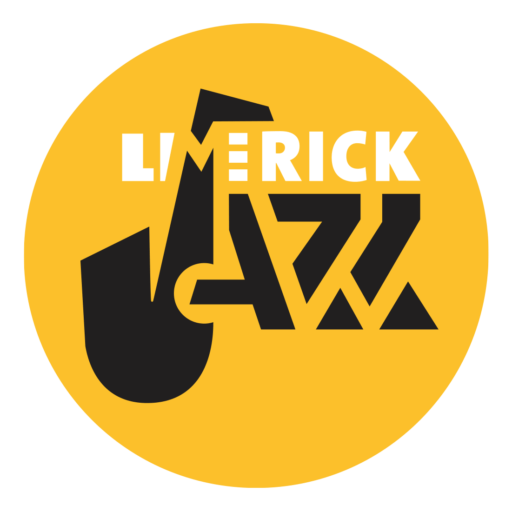A LONG time ago (1982) in an underground cellar in a quiet part of town, Limerick Jazz had its genesis starting out with a local trio or quartet for a few years trying to establish a regular gig in the city. Then in 1989 the occasion was a memorable one, Honor Heffernan and Louis Stewart were in town and it was cool for cats in what was then The Granary Bar – now Trinity Rooms.
“Honor Heffernan and Louis Stewart were huge names then and this is one of the biggest jazz gigs ever in Limerick. Jazz was not happening then”. John Daly, a percussionist, was the man who arranged that gig with Len McCarthy, an experienced Sax player who came up from Cork to back the gig. John a teacher then and now in the Peter Dee Academy of Music, “The interest in jazz for me was always there. You just got the odd jazz gig in Limerick then and we said we’d try to get something steadier going. I’d made myself known to musicians such as Louis Stewart and Len McCarthy and Paddy O’Sullvan and we got that gig going. Len, Paddy and myself were the original three and Limerick Jazz really started from that Granary gig. Guitarist Ray Fitzgerald is another musician who has been a real inspiration over the years”.
The Pink Elephant is another name with resonance from the past. It was while playing there that John Daly met up with Evan Morrissey, who was recording another jazz gig for his own library purposes. As we know, all great clubs demand a stairs entry. It’s about the excitement of going underground or that of seeking heaven. Upstairs in Dolan’s, its chill room of stone walls, candlelight, terrace and essentially, superb acoustics, now houses Limerick Jazz and its musical strains.
Going underground
“Jazz was almost underground in Limerick in the 1980s,” recalls Tony Rodgers, one of the first committee members. “The local quartet, led by Bryan Meehan, was playing in pubs like Costellos and The Granary and backing guests like Richie Buckley and Len McCarthy, playing mostly for a pittance or whatever could be collected at the door. Originally founded by Bryan Meehan, John Daly, Evan Morrissey and Paul O’Sullivan, the Limerick Jazz Society elected a formal committee in 1992, including myself as secretary. And within a few years we had approached the Arts Council successfully for funding, in 1995 receiving the paltry sum of 1,000euro but setting the precedent in being the first jazz society to receive such funding. Jazz, a four letter word, was becoming respectable”
Be-bop Heaven
A FEW years later, this small and tight committee had precipitated Limerick to national prominence as a sought-after city with the musicians, audience and venues to attract big names. At least a dozen gigs a year helped build a constant rapport with punters, one stoked by hard work in keeping flyers, posters and the mailing list circulated regularly.
“Limerick had now become THE place for Dublin jazz musicians to play – a good listening audience, and being paid like the professionals they were,” Rodgers states. “Amusingly, the Evening Herald even gave us their informal award for the Best Run Jazz Society for 1997 with the headline Be-pop Heaven by the Shannon”. People took notice.
The Great and Good
“Our all time top three artists?” muses John Daly. “I’d say Brad Meldhau, a world class pianist. Then we had Julian Joseph on piano, Spike Robinson on saxophone and Ken Peplowski on saxophone and clarinet. They had been voted the Best Jazz Trio for two years in a row. Jazz groups who came to Limerick Jazz Society included Guy Barker, trumpet player, Noel Kelehen and Jim Doherty, bassists Dave Fleming, John Wadham on drums. These are major major names who played with vocalists such as Honor Heffernan, Dorothy Murphy, Christine Tobin”.
Big names don’t travel to the musical equivalent of Little China, and LJS “had built a very reputable status in Limerick,” John points out. “These people knew they were going to be put up, be looked after, be paid. Jim Doherty and Noel Kelehan make it clear that Limerick has always been a great city for them. They got a proper piano when they came here, and a quality product”.
Moving On
SOMETHING else began to happen. With this ‘quality product’, a reliable series of great sets with great musicians and some Names, interest on a wider scale began to grow – Britpop and celtic twilight were not the only candidates in modern music in the 1990s.
“Remember that people in Limerick had not enough to exposure to jazz earlier on. It was different for me as a musician, I always had the interest,” Daly recalls. “But radio presenters such as John Creedon, Ryan Tubridy, Ronan Collins, Donald Helm in RTE lyric fm on Saturday night, Limerick Jazz’s Eamonn Lenihan on Sunday night play to an audience. In fairness to lyric, they have kept it fairly consistent and radio play is the only way younger people are going to hear jazz. Kids today learning music associate guitar with heavy metal, rap, rock – these are hits with a young audience, not jazz. It’s complex and technically demanding”.
Balance and Control
RESPONSIBLE for the Limerick Jazz house trio that backs guest artists, Daly’s own education in jazz began with RTE’s television ‘fillers’, slots of 10 minutes here and there of the Louis Stewart Trio. Getting a place in Berklee College, Boston confirmed a talent there.
“We have different musical backgrounds in the house trio and different influences. Joe O’Callaghan, our guitarist, studied with Ronan Guilfoyle and did a composition course at guilds level. Mike Hinchy is from an intensely musical family. His Dad Mike Snr was leader of St John’s Brass and Reed Band and Mike has one of three musician brothers.” “On stage, we’re all equal, the night is about getting it to gel, with ourselves and visiting artists. In jazz, personalities dictate playing and through playing you get to know who people are, it gives you that insight – three numbers into a live gig”.
The Jazz Party
With respect to the balance Limerick Jazz has been in-house gigs and visiting bands, as chairman John Daly is conscious of choices to be made: “We have to find the proper balance between guest artists, visiting bands and our own band. There is cost to consider, the outlay involved in a project, the take on the door, accommodation, perhaps flights for [outside] musicians booked. Come October, we have two national artists playing in Dolan’s and two international acts.
“On November 23, 2006 we hosted the Jazz Party in Dolan’s Warehouse and Upstairs, a jam benefit for Limerick Rape Crisis Centre’s Silver Jubilee year. The top names in the Jazz scene in Ireland are giving their services free for that – Nigel Mooney and his Quartet, Richie Buckley, Phil Ware, Dorothy Murphy, Jim Doherty, Myles Drennan, Eamonn Lenihan, Bryan Meehan’s Big Band are among the line up we’ve confirmed so far. Mick Dolan is providing the venues free to us and we could not ask for more – this man is great in promoting live music, all the time”.
Beautiful Vision
A VIBE echoed by society secretary Tony Rodgers.
“The most important development for jazz in Limerick has been the arrival of Mick Dolan’s Upstairs venue. It’s a dedicated space for small listening audiences of up to about 150 and with state-of-the-art sound and recording equipment, good lighting and comfort. Much of the work and drudgery has been taken out of the organising end”.
There are other changes, and ambitions for the future to nurture, notes this Limerick Jazz veteran: “I would see us now at transition stage, some of our regulars have not yet dipped their toe into the Dolan pool. We need to get them back and build up a wider audience which in turn will enable us programme bigger names. When Dolan’s has become better established as the base for Limerick Jazz, I could see world-class bands filling the bigger Warehouse space in a fully seated concert
The Future
Limerick is now outside of the Capital the most consistent Jazz venue in the 32 counties, holding regular sessions with Local National and International acts usually from Jan to May and Sept to December, consisting of 15 or more gigs per year, its goal is to provide for as long as possible entertainment to all Jazz lovers in the Midwest. We would like to acknowledge to Arts Council of Ireland and Limerick City and County Council for their ongoing assistance for whom without this would not be possible. From a humble beginning Limerick Jazz is now nationally and internationally recognized as one of the hot spots for jazz, one has only to check our new website www.limerickjazz.com to see the list of wonderful musicians who performed in limerick, so jazz is alive and well here and long may it continue.
– John Daly, Chairperson

